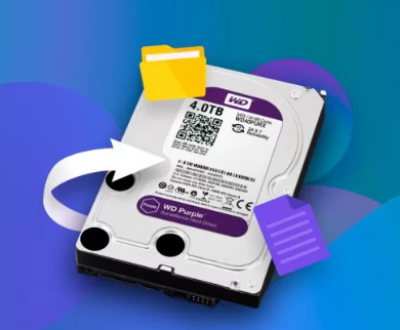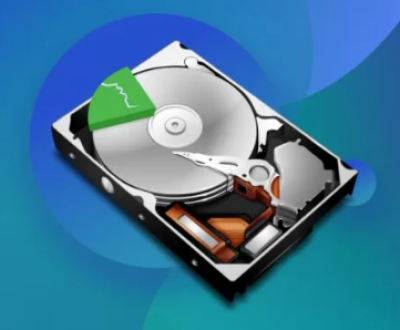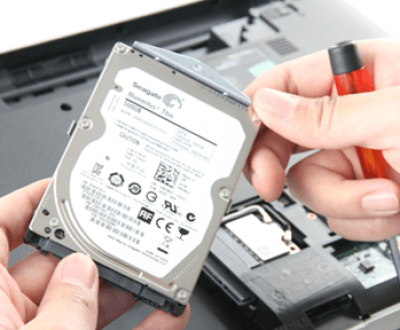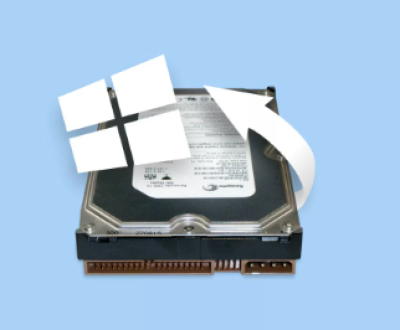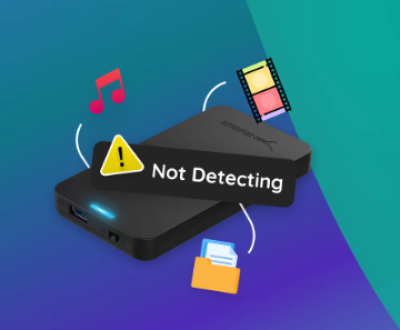They are used to store a vast amount of important data, including documents, photos, videos, and more. However, losing data from an external hard drive can be a nightmare. Whether it’s due to accidental deletion, formatting, virus attacks, or hardware failures, the loss of data can be devastating. The good news is that there are several methods and tools available to recover deleted files from an external hard drive.
Reasons for File Deletion on External Hard Drives
Accidental Deletion: This is one of the most common reasons for losing files on an external hard drive. It can happen when you accidentally select the wrong files and hit the delete button or when you perform a mass deletion without double-checking.

Formatting: Formatting an external hard drive is sometimes necessary, but if it’s done by mistake or without backing up the data first, it can lead to the loss of all files on the drive.
Virus and Malware Attacks: Viruses and malware can infect your external hard drive and cause damage to your files. They may delete files, corrupt them, or make them inaccessible.
Hardware Failures: Physical damage to the external hard drive, such as a dropped drive, water damage, or a faulty connection, can also result in data loss. The hard drive’s internal components, like the read/write head or the platters, may get damaged, making it difficult or impossible to access the data.
Software Issues: Problems with the operating system or file system can also lead to file deletion or inaccessibility. For example, a corrupted file system may cause files to appear missing or unreadable.
Preventive Measures Before Recovery
Stop Using the External Hard Drive: As soon as you realize that files have been deleted, stop using the external hard drive immediately. Continuing to use it may overwrite the deleted files, making it much more difficult or even impossible to recover them.
Avoid Making Changes to the Drive: Do not add any new files to the external hard drive or perform any operations that could modify the data on it. This includes formatting, partitioning, or running disk repair tools without proper knowledge, as these actions can also overwrite the deleted data.
Create a Backup of the Drive: If possible, make a backup of the entire external hard drive before attempting any recovery methods. This way, you have a copy of the current state of the drive, and you can work on the backup instead of the original drive, reducing the risk of further data loss.
Methods to Recover Deleted Files from External Hard Drive
Using Data Recovery Software
This software is built with a user-friendly interface, making it accessible for both beginners and advanced users. It employs advanced scanning techniques to thoroughly search for deleted files, even those that might be difficult to recover with other tools. Panda Assistant supports a wide variety of file types, such as documents, photos, videos, and audio files, ensuring comprehensive recovery options.
One of the standout features of Panda Assistant is its ability to recover data without overwriting existing files, preserving the integrity of the remaining data during the recovery process. The tool also provides flexible recovery options, including restoring files to their original locations or choosing a custom destination.
Compatible with both Windows and macOS, Panda Assistant offers a versatile and reliable solution for any data recovery needs. Its speed and effectiveness, combined with a simple interface, make it an ideal choice for users who need to recover lost or damaged files quickly and efficiently. Whether you are dealing with a corrupted SD card or a failing hard drive, Panda Assistant can help you retrieve your valuable data.
Steps to Use Data Recovery Software:
Download and Install the Software: Visit the official website of the data recovery software and download the appropriate version for your operating system. Install the software on your computer.
Connect the External Hard Drive: Plug in the external hard drive containing the deleted files to your computer. Make sure it is properly recognized by the system.
Launch the Data Recovery Software: Open the installed data recovery software. It will usually detect the connected external hard drive automatically.
Select the Drive and Scan: Select the external hard drive from the list of available drives in the software. Then, start the scanning process. The software will begin to scan the drive for deleted files. This process may take some time, depending on the size of the drive and the amount of data on it.
Preview and Recover: After the scanning is complete, the software will display a list of recovered files. You can usually preview the files to see if they are the ones you want to recover. Select the files you want to restore and choose a location on your computer to save the recovered files. Make sure not to save them back to the original external hard drive to avoid overwriting the data.
Using Windows File History or Time Machine (for Mac)
Windows File History: If you are using a Windows computer and have enabled File History, you can use it to recover deleted files from an external hard drive. File History automatically backs up your files at regular intervals and stores the backups on an external drive or a network location. To recover files using File History, follow these steps:
Open File History: Search for “File History” in the Windows search bar and open the File History settings.
Select the External Hard Drive: In the File History settings, make sure the external hard drive where your files were deleted from is selected.
Restore Files: Click on the “Restore personal files” button. This will open a window where you can browse through the backed-up versions of your files. Locate the files you want to recover and select them. Then, click the “Restore” button to restore the files to their original location or a different location of your choice.
Mac Time Machine: For Mac users, Time Machine is a built-in backup feature that can be used to recover deleted files from an external hard drive. If you have been using Time Machine to back up your Mac, follow these steps to recover files:
Connect the Backup Drive: Connect the external hard drive that contains the Time Machine backups to your Mac.
Open Time Machine: Click on the Time Machine icon in the menu bar and select “Enter Time Machine”.
Navigate and Restore: In the Time Machine interface, you can browse through different time points and versions of your files. Locate the files you want to recover and select them. Then, click the “Restore” button to restore the files to their original location on your Mac.
Using Command Prompt (Windows) or Terminal (Mac)
Windows Command Prompt: In Windows, you can use the Command Prompt to try to recover deleted files from an external hard drive, especially if the deletion was due to a simple file system error. The “chkdsk” command can be used to check and repair the file system on the external hard drive. Here’s how:
Open Command Prompt as Administrator: Search for “Command Prompt” in the Windows search bar. Right-click on the Command Prompt icon and select “Run as administrator”.
Identify the Drive Letter: Plug in the external hard drive and note the drive letter assigned to it. You can check this in “This PC” or “Disk Management”.
Run chkdsk: In the Command Prompt, type “chkdsk [drive letter]: /f” (replace [drive letter] with the actual letter of your external hard drive). For example, if the external hard drive is assigned the letter “E”, you would type “chkdsk E: /f”. This command will check the file system for errors and attempt to fix them. It may also recover some deleted files if the deletion was caused by a file system issue.
Mac Terminal: On a Mac, you can use the Terminal to perform some basic data recovery tasks. For example, if you have accidentally deleted a file and know its name, you can use the “find” command to search for it. Here’s how:
Open Terminal: You can find the Terminal in the “Utilities” folder within the “Applications” folder or by using Spotlight search.
Search for the File: Use the “find” command to search for the deleted file. For example, if you want to search for a file named “example.txt” on an external hard drive mounted at “/Volumes/ExternalDrive”, you would type “find /Volumes/ExternalDrive -name example.txt”. This command will search the entire external hard drive for the file with the specified name. If the file is found, it will display the path to the file. You can then try to copy or move the file to a safe location.
Seeking Professional Data Recovery Services
When to Consider Professional Services: If the above methods do not work or if you suspect that the data loss is due to a serious hardware problem, it may be time to consider seeking professional data recovery services. Professional data recovery companies have specialized equipment and expertise to handle complex data recovery situations, such as recovering data from a physically damaged hard drive or a drive with a corrupted firmware.
Choosing a Reputable Data Recovery Company: When choosing a professional data recovery service, it’s important to do your research and choose a reputable company. Look for companies that have been in the business for a long time, have positive customer reviews, and offer a free evaluation of your data recovery case. Some well-known data recovery companies include DriveSavers, Gillware Data Recovery, and ACE Data Recovery.
The Data Recovery Process with Professionals: Professional data recovery companies typically follow a specific process. First, they will evaluate the condition of your external hard drive to determine the cause of the data loss. Then, they will use specialized tools and techniques to recover the data. This may involve opening the hard drive in a clean room environment to repair or replace damaged components, or using advanced software to extract data from a corrupted file system. Once the data is recovered, they will provide you with a copy of the recovered data on a new storage device.
About us and this blog
Panda Assistant is built on the latest data recovery algorithms, ensuring that no file is too damaged, too lost, or too corrupted to be recovered.
Request a free quote
We believe that data recovery shouldn’t be a daunting task. That’s why we’ve designed Panda Assistant to be as easy to use as it is powerful. With a few clicks, you can initiate a scan, preview recoverable files, and restore your data all within a matter of minutes.
Subscribe to our newsletter!
More from our blog
See all postsRecent Posts
- How to recover data from formatted hard disk 2025-07-14
- How to recover files from hard disk 2025-07-14
- How to recover data from portable hard disk 2025-07-14

 Try lt Free
Try lt Free Recovery success rate of up to
Recovery success rate of up to

